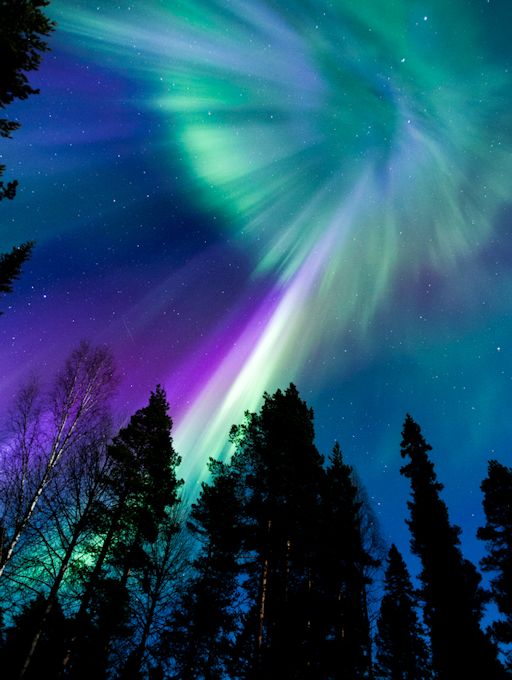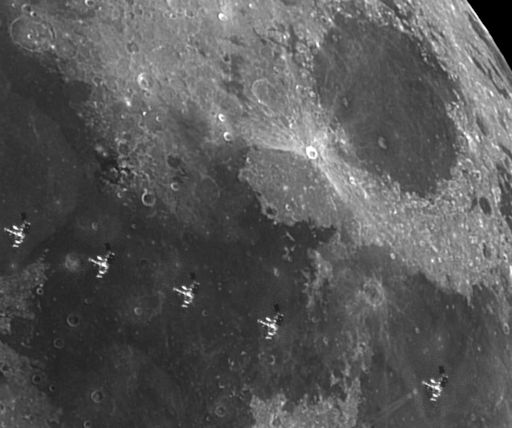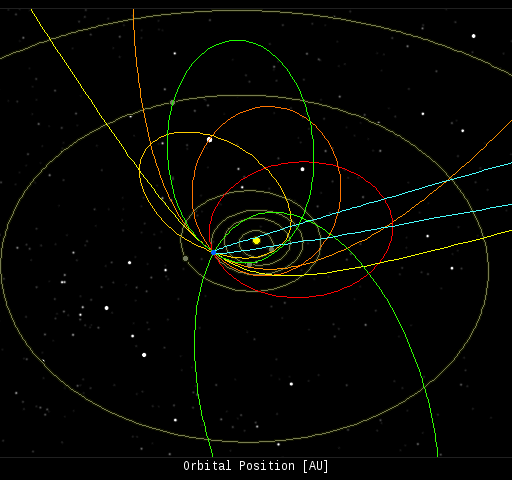On April 15th there will be a total eclipse of the Moon. Got clouds? No problem. The event will be broadcast live on the web by the Coca-Cola Science Center. | | | TOTAL LUNAR ECLIPSE: Mark your calendar. On April 15th, there will be a total eclipse of the Moon visible from Australia, New Zealand, and all of the Americas. The action begins on Tuesday at 2 AM Eastern time. Get the full story and a video from Science@NASA. SUBSIDING STORM: A polar geomagnetic storm that began during the late hours of April 11th is subsiding now. At its peak, the storm registered 5 on the Kp scale of magnetic disturbances, which means it was a relatively minor event. Nevertheless, it was strong enough to spark naked-eye auroras. A family of "aurora addicts" traveling through Boden, Sweden, took this picture of the light: 
The storm began on April 11th when the interplanetary magnetic field (IMF) near Earth tipped south, opening a crack in our planet's magnetosphere. Solar wind poured in to fuel the display. Although the storm is subsiding, more auroras are possible on April 12th. NOAA forecasters estimate a 40% chance of renewed geomagnetic storming during the next 24 hours. Aurora alerts: text, voice Realtime Aurora Photo Gallery SPACE STATION TRANSITS THE MOON: Three nights ago, astrophotographers Pete Lawrence and Ian Sharp stood in Sharp's back garden in Ham UK waiting for a spaceship to pass in front of the Moon. When it happened, their eyes barely registered the event. High-speed cameras, however, recorded a beautiful view of the ISS speeding over the Sea of Tranquillity: 
"Thanks to Pete Lawrence for alerting me to this," says Sharp, who took the picture using a 5-inch refractor. "Pete made the 5 mile trip to setup here and we both imaged the event separately and successfully." [Lawrence's photo] The ISS transiting the Moon sounds like a rare event, but it happens more often than you might suppose. Only one night earlier, on April 8th, Maximilian Teodorescu of Daia (Giurgiu), Romania, photographed a similar flyby. Most transits go unnoticed because they are so brief. The ISS, moving faster than 17,000 mph, completes its trip across the lunar disk in only a fraction of a second. If you would like to catch the ISS in the act, check Calsky for predicted lunar transits over your home town. Realtime Space Weather Photo Gallery
Realtime Mars Photo Gallery
Realtime Comet Photo Gallery
Every night, a network of NASA all-sky cameras scans the skies above the United States for meteoritic fireballs. Automated software maintained by NASA's Meteoroid Environment Office calculates their orbits, velocity, penetration depth in Earth's atmosphere and many other characteristics. Daily results are presented here on Spaceweather.com. On Apr. 11, 2014, the network reported 10 fireballs.
(10 sporadics) 
In this diagram of the inner solar system, all of the fireball orbits intersect at a single point--Earth. The orbits are color-coded by velocity, from slow (red) to fast (blue). [Larger image] [movies]
Potentially Hazardous Asteroids ( PHAs) are space rocks larger than approximately 100m that can come closer to Earth than 0.05 AU. None of the known PHAs is on a collision course with our planet, although astronomers are finding new ones all the time. On April 12, 2014 there were 1466 potentially hazardous asteroids. Notes: LD means "Lunar Distance." 1 LD = 384,401 km, the distance between Earth and the Moon. 1 LD also equals 0.00256 AU. MAG is the visual magnitude of the asteroid on the date of closest approach. | | The official U.S. government space weather bureau | | | The first place to look for information about sundogs, pillars, rainbows and related phenomena. | | | Researchers call it a "Hubble for the sun." SDO is the most advanced solar observatory ever. | | | 3D views of the sun from NASA's Solar and Terrestrial Relations Observatory | | | Realtime and archival images of the Sun from SOHO. | | | from the NOAA Space Environment Center | | | the underlying science of space weather | | 
